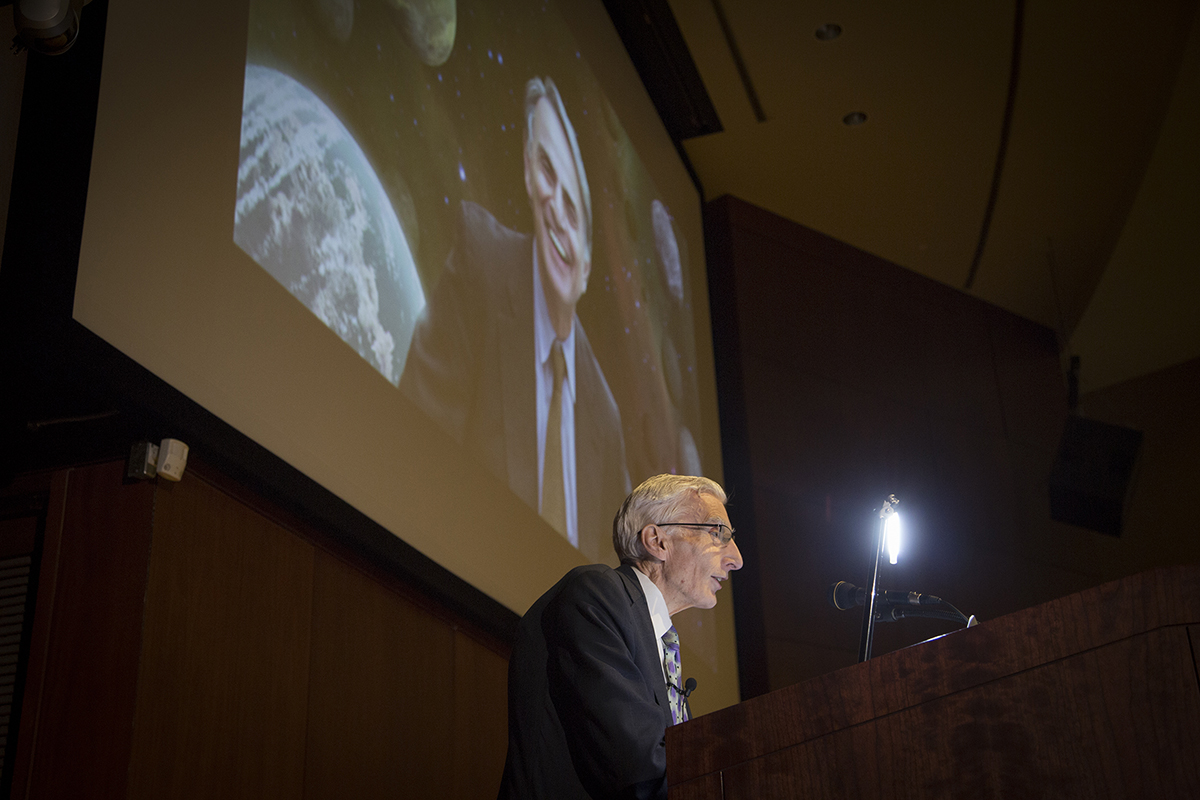Preserving our 'pale blue dot' is focus of first Sagan lecture
By Blaine Friedlander

Lord Martin Rees, who has probed deep into the cosmos, studied gamma-ray bursts and galactic formations, spoke May 8 at Cornell’s David L. Call Alumni Auditorium on issues closer to home: the preservation of our “pale blue dot.”
“Extinction rates are rising. We’ve destroyed the Book of Life before we’ve read it. Biodiversity is a crucial component for long-term human well-being,” said Rees, Britain’s astronomer royal and the inaugural Carl Sagan Distinguished Lecturer, hosted by Cornell’s Carl Sagan Institute.
Rees covered an array of Earth issues, including how scientific projectiles explore our solar system, rising population trends, preventing the extermination of entire nonhuman species and maintaining biodiversity. “We’re clearly harmed if fish stock dwindles to extinction. There are plants in the rainforest gene pool that might be useful to us,” he said in his lecture, “Surviving the Century.”
“For many environmentalists, preserving the richness of our biosphere has value in its own right – over and above what it means to us humans,” Rees said. “To quote the great ecologist E.O. Wilson, ‘Mass extinction is the sin that future generations will least forgive us for.’”
Rees talked about atmospheric concentrations of carbon dioxide rising over the past half-century and ways to create a low-carbon energy future. He said all nations should accelerate their research and development into all forms of sustainable energy generation. “Climate change is not underdiscussed, though it is, I’m afraid, underacted upon at the moment,” he said.
Rees is the 15th astronomer royal, a British crown position created by King Charles II in 1675. The chair has been continually filled for 392 years; Rees has served since 1995. The first astronomer royal was John Flamsteed, who calculated solar eclipses and cataloged stars, and designed and constructed an astronomer’s quadrant. Edmond Halley, of comet fame, was second.
Sagan’s widow, Ann Druyan, who produced, directed and wrote the recent “Cosmos” television series that starred astronomer Neil deGrasse Tyson, introduced the lecture. Druyan said of Sagan, “He was a citizen scientist who was so conscientious, he mounted an independent campaign – without any help from anyone – to fight for the future of this planet. Thank you for remembering Carl in the absolutely most appropriate way.”
Rees also spoke about Sagan’s significance: “Carl was the pre-eminent exemplar of the concerned scientist, and he had huge influence through his writings, his broadcasts and his lectures and campaigns. And this is all before the age of social media tweets. He would have been a leader in the recent March for Science – electrifying crowds through his passion – and his eloquence.”
The key, Rees said, is to facilitate new technology to offer a high quality of life to the predicted 9 billion people expected to be on Earth by 2050. “But the science is a doddle compared to the politics and sociology,” Rees cautioned. “We need to focus on the problems we are ourselves causing, and think on a timescale of a century – an instant in cosmic perspective but an eternity for politicians.”
Media Contact
Get Cornell news delivered right to your inbox.
Subscribe